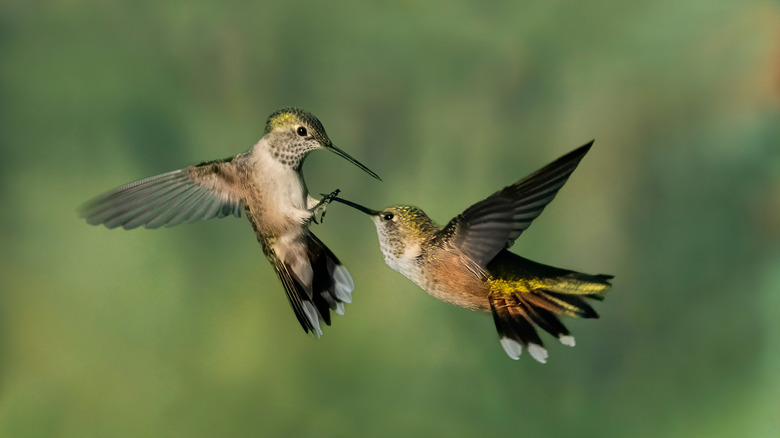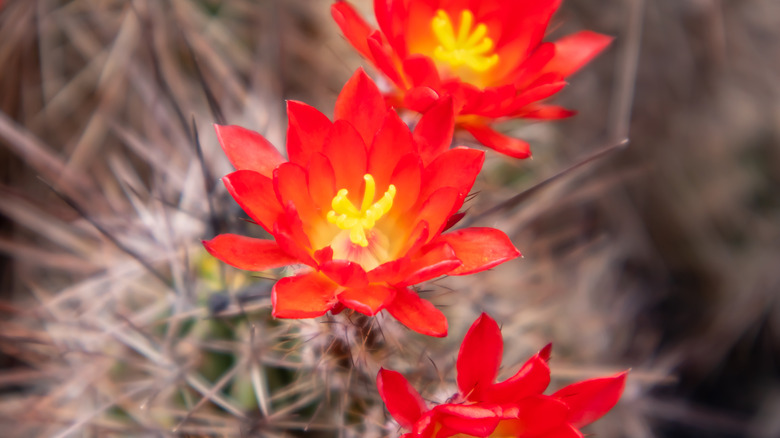Add Beauty To Your Garden With A Flowering Succulent That Hummingbirds Can't Resist
Have you noticed that most hummingbird feeders are bright red? Long before these birds were visiting glass and plastic feeders hanging by house windows, hummingbirds chased shades of red in the wild landscape. But unless you are a desert dweller, you may not expect them to forage from cactus flowers. Surprisingly, however, there's a heat-loving plant that fits the bill. Scarlet hedgehog cactus (Echinocereus coccineus) is a flowering succulent that hummingbirds adore.
If you're already growing perennial plants to fill your yard with hummingbirds, you'll know about these birds' fondness for the color red, since the eyes of these small birds are well-adapted to seeing red tones. Those who are a bit obsessed with these birds may also know they love tubular flowers, but the fact that the mighty hummingbird is the number one pollinator for a cactus native to the southwestern US may come as a surprise. Also known as Mexican claret cup, scarlet hedgehog cactus produces clumps of cylindrical stems covered in spines along with big, red blooms that make them one of the flowers that will transform your space into a hummingbird haven.
How to grow scarlet hedgehog cactus for hummingbirds
Of course, these spiny plants aren't adaptable to everyone's gardens, so you'll want to know about their growing requirements before you start wondering how you're going to pick one up without getting stabbed. (Psst, use folded newspaper to fashion a handle around the stem.) Scarlet hedgehog cacti require full sun and very well-draining soil that has a high mineral content, such as sand or rocks. If you live in the Southwest or a similarly dry region in USDA Hardiness Zones 5 through 9, it will adapt readily to your yard, but gardeners in less arid areas will want to choose from other hummingbird-friendly plants, such as bee balm.
If all systems are go for adding this plant to your yard, know that these succulents are perfect for xeriscapes and rock gardens. Planting cacti and succulents is a bit different than other types of plants. Before transplanting one into your yard, trim 2/3 of the length of the roots back. Take care to cover those roots when planting, but not the stems of the cactus, and rather than watering in right away, wait for a week or so.
You'll find great companion plants to grow alongside these cacti among penstemons, which also happen to be plants that hummingbirds love. In addition to growing plants native to your region such as scarlet hedgehog cactus, there are other tips and tricks you can use to attract hummingbirds to your yard — such as choosing annuals, perennials, and shrubs with tubular flowers, as previously mentioned, to accommodate these tiny birds' long tongues.

